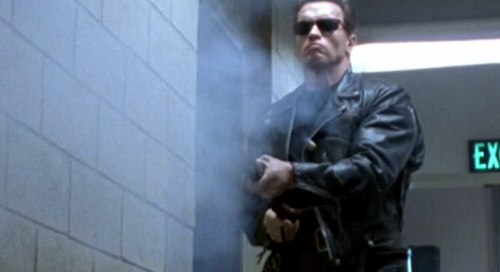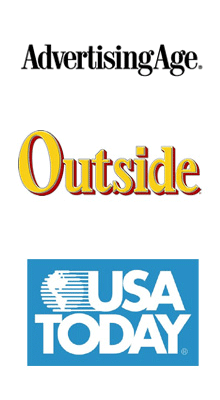On Tuesday, we reviewed two trends from the recent HSMAI Marketing Review Summer 2008 report. Today, we take a look at the specific technology trends that will be influencing your tourism life in the near future.
34 ) Technolgy increasingly dominates both the economy and society.
New technologies are surpassing the previous state of the art in all fields. Laptop computers and Internet-equipped cell phone provide 24/7 access to e-mail and Web sites. Flexible, general-service personal robots will appear in the home by 2015…By 2015, artificial intelligence (AI), data mining, and virtual reality will help most organizations to assimilate data and solve problems beyond the range of today’s computers. … Ultimately, speculations that we are approaching the ‘singularity,’ the time when our artifacts become so intelligent that they can design themselves and we cannot understand how they work, may prove correct. At that point, humanity will be largely a passenger in its own evolution as a technological species. …
IMPLICATIONS FOR HOSPITALITY AND TRAVEL: Air travel will benefit more, and more immediately and directly, from new technologies than any other segment of hospitality and travel. … Better sensors will tighten airport security … By 2018, the first supersonic business jets will take to the air. …
Cruise lines face changes, too. Online travel agencies will account for only 9 percent of cruise sales in 2009, according to PhoCusWright. That will not long be true. Over the next decade, the most important technological development for cruise lines will be the continued growth of online booking.
Early suggestions that cruise travel was too complex and expensive to book without human contact are fast proving to have been wrong. Carnival, Princess, Disney, and other have set up convenient and successful online booking systems for Net-savvy cruisers. Operators with less efficient sits, or none at all, will find themselves at a growing competitive disadvantage. Five years from now, the tradition of booking through a travel agent will have vanished, save in the extreme high end of the market – and there is room to wonder how long agents can survive to serve the luxury market after losing the rest.
Cruise lines hoping to do well in an increasingly Net-savvy marketplace will have to pay scrupulous attention to their reputation. Tales of poor service and disappointed travelers go a long way in online forums, chat rooms, and blogs, and they can take forever to disappear. An impeccable brand is the only assurance the online shopper has that his cruise investment will be money well spent. …
For hotels, the biggest techno-trend is well recognized already. As database systems grow more sophisticated, operators are able to capture ever more detailed information about hotel patrons, from their choice of rooms to their dining preferences and local itinerary. This enables hotel staff to give returning patrons a highly personalized experience and all but guarantees return visits. This technology is quickly raising the level of play in the battle for customer loyalty. Cruise lines, resorts, and other destinations are quickly copying the methods.
On the negative side, long distance calling through the hotel telephone system once was a significant profit center. …
Probably the biggest development for most sectors will be the growing use of RFID (radio-frequency identification) chips to track supplies, automate ordering, and make delivery more efficient, and therefore cheaper.
One nascent restaurant chain in California features order-entry computer at each table. Customers use the terminal to read the menu, view each menu item, and place their order. They see human staff only when handing over their credit cards-before ordering-and when the food is delivered. Computerized ordering will not soon penetrate high-end restaurants, where savings are sorely needed.
Also expect to see innovation at self-bussing restaurants, where patrons will deliver their plates and tableware directly to the maw of the automated washers. …
Thoughts// Okay, that was a long trend. Wow, Dr. Cetron packed a lot into that one. We will look at these topics one at a time.
The initial thoughts on the subject are pretty wide-ranging. Technology is getting better, smarter, faster, etc. The idea of singularity or the ‘Terminator paradox’ says that eventually humans will build computers and machines so smart that they can build themselves and then continue to get smarter, realize they don’t need us and you end up fighting your refrigerator to the death.
I sure hope Gov. Schwarzenegger reads the Travel 2.0 blog.
Anyway, you can see a reoccurring theme here. We are heading to the point where technology will be replacing our own efforts at certain tasks. This has happened throughout the last 100 years, but as we mentioned in the first post, the advances are being deployed at a much higher rate.
Okay, enough of that, break out the tin-foil hats if you want.
The report mentions that airlines will benefit from this new technology…lighter planes, better security (insert your own joke here), better tracking, etc.
Next, we take a look at cruise lines and how online booking with change the industry, which then turned into an entire line about the total elimination of the travel agent. Perhaps the ‘machines’ get to them first. While I completely agree that we will continue to see additional advancements in booking engines throughout the travel industry, not just cruise lines, I disagree about the elimination of the travel agent.
If you have read more than a couple posts about the Travel 2.0 blog, you know that I am a pretty big advocate for the idea of all things being cyclical and the travel industry is no different. The internet has made the travel agent increasingly less useful over the last 5 years, but as our recent post (Where Have All the Online Travelers Gone?) discussed, many ‘Net-savvy’ (Oy.) users are becoming increasingly confused and frustrated with the online travel process. So, rather than the idea of a travel agent being an agent vs. online issue, I would see the use of a travel agent as becoming a value-add feature for many users. Again, all of this keeps going around…eliminate all the travel agents, OTAs look to differentiate themselves, bring back the personal touch of the travel agent!
Not to skip ahead, but we can see the same idea happening in the restaurant industry, according to the report. Computers at the table? Self-bussing restaurants? Interesting hooks in the beginning which certainly have that ‘Wow’ factor, but eventually everyone will have them…no competitive advantage…so, break out the ‘new’ marketing line…’the old-fashion idea of table-side service, that’s right, a human will wait on you!’ Plus, I bussed my own table in school, not a new idea.
Not to mention (again, we talked about this before) that there is a certain segment of the population who will simply not participate. They would rather, based on personal taste or economic factors (they have lots of cash), have someone else book their trip, take their order or schedule a spa day for them.
Finally, the report hit upon hotels…databases, telephones, etc…but briefly touched upon the real story, RFID.
For a brief explanation of RFID, it is the technology that powers your ID card that lets you into your office each day. A little chip inside the card knows who you are and what access level you have to the building. Now, beyond just ordering more lettuce…which is great…lets think about how hotels can really use RFID to enhance the guest experience.
For example, I am enrolled in the Hilton loyalty program, they issue me a Hilton Rewards ID card and assign a user name to my account. I enter my preferences about hotel stays on my account (online, via mobile, whatever) and book a stay online at the Hilton in downtown Phoenix. With the card in my pocket, I walk through the front doors, by the scanners on each side that detect that I have arrived…yeah, the same type of scanners that prevent you from stealing from stores…anyway, I receive a text message on my phone listing my room number. I proceed to room 707, flip my cell phone screen at the lock, it reads the 2D barcode on my phone and unlocks the door. When I enter the room, the lights are on, A/C is set to my preferred temperature and the TV is already tuned to CNN. The RFID card / computer system knows this info and automatically updates the room to my preferred settings.
Now, enter the semantic web. Because I booked my hotel online, my Outlook account has told the Hilton system that I have a business meeting at 8:00 AM tomorrow morning. Because I have entered the room, the alarm clock is automatically set to 6:30 AM and room service (Hilton knows what I like based upon previous visits) has already been ordered and is scheduled to arrive at 7:30 AM.
Oh, and there is an extra mint on my pillow. I like that. And the machine knows it.
Now that is a prediction.









